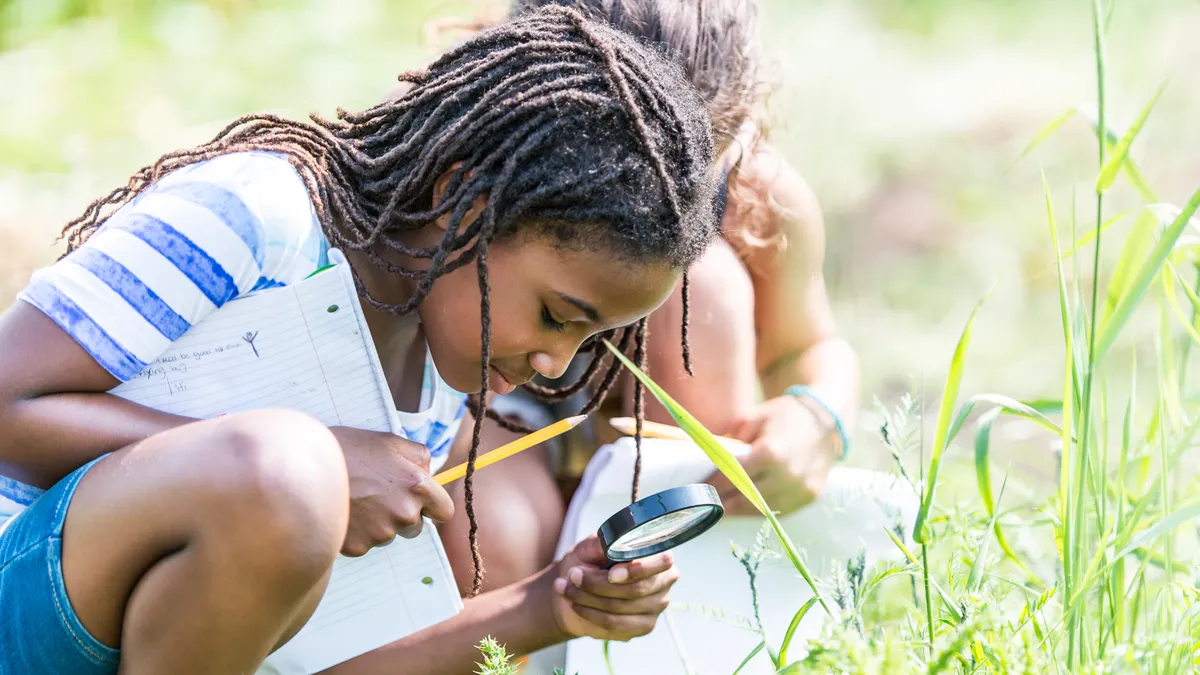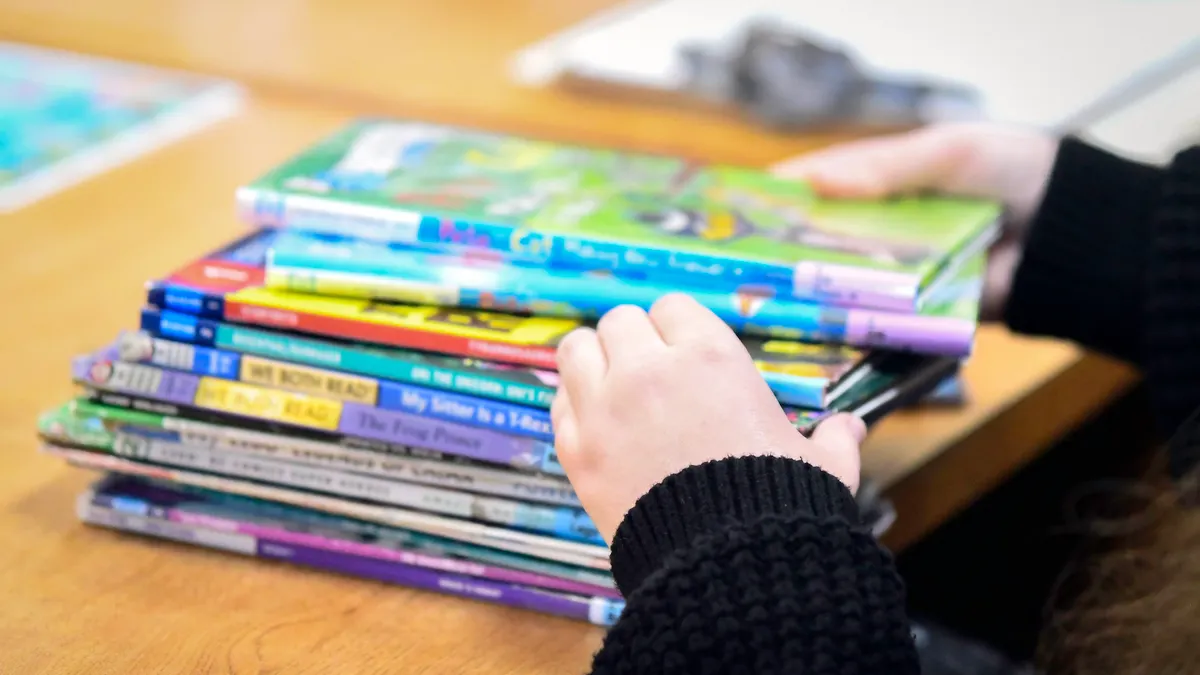See today's story on the Hamilton Education Program's stop in San Diego.
There’s nothing like the sights and sounds of a live production. But can attending a theater performance improve early literacy skills? That’s what researchers at Purdue University hope to learn as part of a new research partnership involving 10,000 children from 116 schools across the country.
In the study, one group of 3rd graders reads “My Father’s Dragon,” a tale of a boy who rescues a baby dragon, attends the Philadelphia-based Enchantment Theater Company’s production of the story, and then takes an assessment. A second group of students reads the story, takes the assessment, and then sees the show. Researchers are examining how seeing the live performance impacts students’ understanding of the plot, characters and the vocabulary in the story, and comparing the results to those who didn’t see the show before the test.
Purdue Convocations, the university’s performing arts company, is also conducting the study in partnership with the Brad Simon Organization, a tour organizer. Results are expected later this year. In an article following a performance at the Sandler Center for the Performing Arts in Virginia Beach, VA, Amanda Mayes, the manager of education for Purdue Convocations, suggested that the study is part of a “larger agenda” to make the arts a more integral part of education.
‘Another language’
Students don’t have to attend the theater, however, in order for drama to support their reading comprehension skills. That’s what the leaders of Childsplay, a Tempe, AZ-based children’s theater, are finding as part of their Early Years Educators at Play (EYEPlay) program, which trains teachers working with 3-, 4- and 5-year-olds to integrate drama into early literacy instruction by pairing them with professional theater teaching artists. Childsplay has a similar program called Drama Frames, which pairs a drama strategy, such as pantomime, with a curricular goal, such as vocabulary development, for grades K-8.
Teachers are “engaging multiple learning modalities” when they have students get up on their feet and put themselves into a character, an environment and a problem presented in a book, explains Jenny Millinger, the associate artistic director at Childsplay. Unlike dramatic play areas in most early childhood classrooms, drama integration doesn’t require sets or props, she explains. She gives the example of using drama to describe snow, a concept that is probably abstract for many young children in Arizona, by having them imagine crunching sounds underfoot.
Drama “adds another language to the classroom” and can be especially effective among English learners who might not yet have the language skills to express that they comprehend what is happening in a book, says Korbi Adams, the director of education and school programs at Childplay.
“Every time they engage with performance art, children are learning about storytelling, history, sociability, artistry, and physicality,” Millinger and Adams wrote in a white paper last year with co-authors Michael F. Kelley and Sultan Kilinc of Arizona State University (ASU). “Through performance, children learn skills related to organization, collaboration, emotional competence, compassion, and literacy.”
With a grant from the Phoenix-based Helios Education Foundation, Childsplay is implementing the one-year EYEPplay program in preschool classrooms in Arizona. The foundation, which has a second office in Tampa, FL, is also partnering with the Orlando Repertory Theatre and the Orange County Public Schools to EYEPlay program to dual language pre-K classrooms in Florida.
The model creates a community of practice among teachers so they continue to blend drama into their teaching practices after they stop working with the artists.
Drama can also teach problem solving
For Nicole Ainsa, a preschool teacher at the ASU Preparatory Academy, being dramatic wasn’t the big challenge — it was the planning that comes beforehand.
“I have to practice the book and movements prior to reading it to my class so I can feel confident with directing my students during the drama,” she says, recalling a recent story in which her students, some of which are still learning English, used their bodies to show their understanding of the word enormous. “I have to believe what I am saying, describing and pantomiming in order for my students to take on their role as active participants during the drama.”
She describes another lesson in which she took on the lead character’s role in “A Sick Day for Amos McGee,” in which a zookeeper misses work and the elephants miss him so much they come to check on him and try to help him feel better. Ainsa’s students acted out baking bread and giving her blankets and tissues. One even suggested calling the fire department until they realized nothing was on fire.
“Not only have I gained strategies to support my students’ ability to retell, comprehend and use higher-level words in their vocabulary, but incorporating drama also provides my students with first-hand experience with a story, settings or words they may have never used before,” Ainsa says. “The students also demonstrate their ability to solve problems and think of solutions to issues that may occur in the story and can then relate it to the real world.”


















